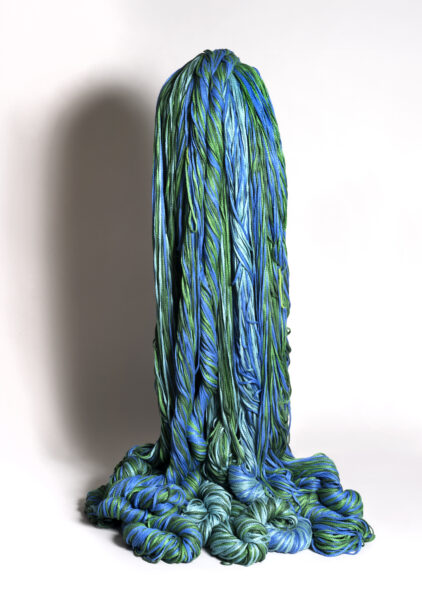
As a supporter of crafts and creation since the 17th century, Mobilier National’s mission is to ensure the preservation and restoration of its unique collections, to perpetuate and pass down exceptional craftsmanship. As a major heritage site, the institution is also an important actor of contemporary creation and the promotion of French decorative arts.
Mobilier national owns a collection of tens of thousands of furniture pieces and objects meant to furnish and decorate the official buildings of the Republic in France and abroad. More than three hundred and forty women and men work daily to maintain, practice or promote the institution's excellent know-how, in Paris and throughout France.
The Gobelins and Beauvais manufactories are dedicated to tapestry, the Savonnerie manufactory to rugs, and the Puy-en-Velay and Alençon workshops to lace. The Research and creation workshop (Atelier de Recherche et de Création - the ARC) promotes creation and contemporary design in France. Seven restoration workshops are in charge of various specialties of wood, metal and textile.
Definitely forward-looking, Mobilier National is one of the founding members of the Campus d'Excellence des métiers d'arts et du design - Paris, Gobelins manufactory, launched in 2020. Through its role, it bears witness to the vitality of artistic creation and contemporary design.
The Mobilier national is a public administrative institution attached to the Ministry of Culture.
Around decommissioned furniture from the collections of the Mobilier National, without much heritage value, has developed the idea of an innovative research in an eco-responsible logic of respect and reuse of materials. Since 2019, the institution gives carte blanche to artists to freely reinvent these old furniture, highlighting the contemporary creation that metamorphoses these "Alienated".
For these artistic interventions, the emphasis is often placed on the decorative, without changing the original line of the furniture. Thus Thierry Betancourt sheathes a Louis XV style chest of drawers in a cloud of parchment and papier-mâché, demonstrating that the forms of the 18th century retain their relevance. The duo of stylists and designers Ravage dresses an Empire style desk in homage to the Napoleonic epic: this transformed piece becomes the imaginary office of Longwood, the last place of detention of the Emperor. For her 510-Cu chair, Prisca Razafindrakoto proposes a playful detour of the Mullca 510 chair designed by Gaston Cavaillon. She plays with the ductility of copper that she deforms under the pressure of pressurized air, before oxidizing it with a blowtorch in subtle color ranges in gradation.
This commissioned program is also an opportunity to showcase a variety of skills. Andrew Erdos's Ghost lamps are installed on a bronze lamp base, where each piece of glass is blown into a mold made of logs that imprint their bark on the molten material. The artists also draw their inspiration from the textile world of the national factories: Sheila Hicks creates a three-dimensional work in blue and green linen laces woven into a chain, supported by the backbone of a barely visible wrought iron lamp post. The result is reminiscent of the strength of the composition of Rodin's famous Balzac, which gives its title to the work. Finally, Camille Gasser laser-engraved a revolving armchair with weaving motifs of horsehair fabrics and replaced the caning with a weaving of white wool loops recovered from the Gobelins, Beauvais and La Savonnerie factories.